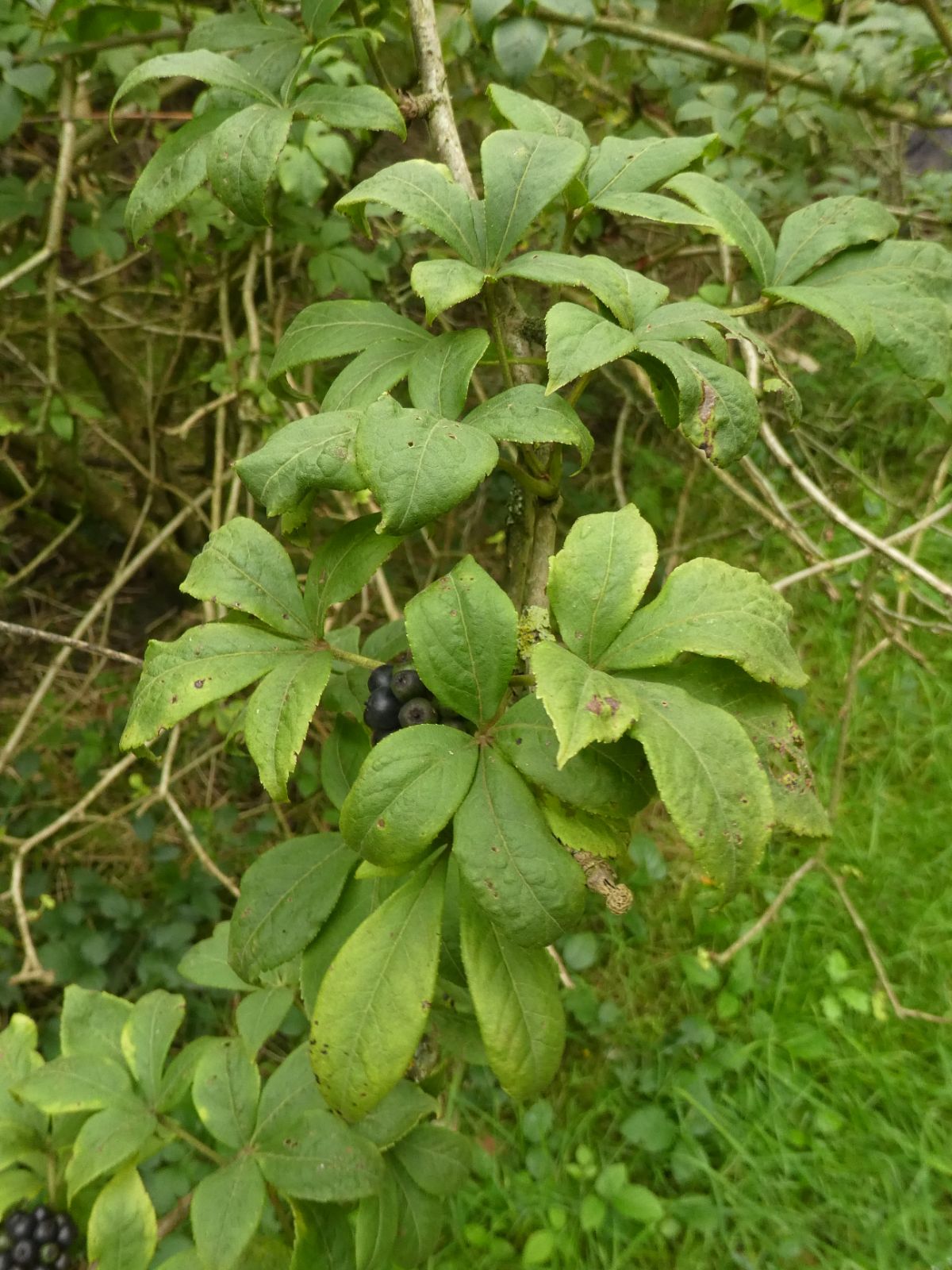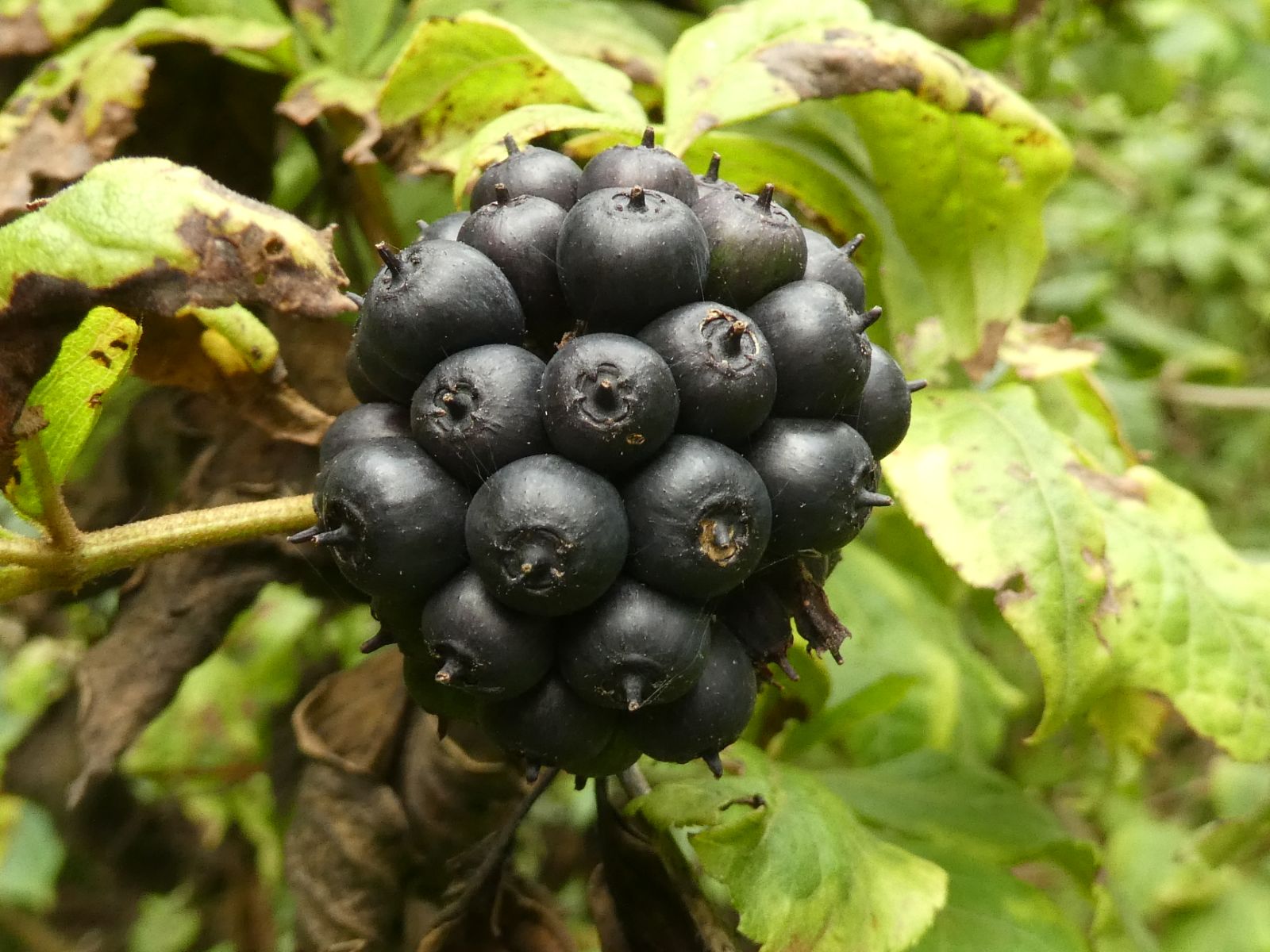Acanthopanax henryi
Credits
Article from Bean's Trees and Shrubs Hardy in the British Isles
Recommended citation
'Acanthopanax henryi' from the website Trees and Shrubs Online (treesandshrubsonline.
Genus
Synonyms
- Eleutherococcus henryi Oliver
A sturdy bush, said to become 10 ft high in a wild state, with rigid, pale brown branchlets, rough with minute bristles, and armed with broad sturdy spines, 1⁄6 in. long, straight or slightly decurved. Leaves composed of five leaflets on a stalk 11⁄2 to 3 in. long, rough to the touch. Leaflets obovate or oval, 11⁄2 to 31⁄2 in. long, 3⁄4 to 11⁄2 in. wide; tapering nearly equally towards both ends, scarcely stalked; the margins finely and simply toothed; upper surface harsh, lower one more or less hairy. Flowers in a terminal cluster of umbels borne on a sturdy, slightly hairy stalk, 1 to 2 in. long; the terminal umbel the largest and earliest. Fruits inky black, oblong, 3⁄8 in. long, in globose umbels 2 in. across. Bot. Mag., t. 8316.
Native of Central China; introduced by Wilson for Messrs Veitch in 1901, and first flowered at Coombe Wood four years later. It is an interesting but not showy shrub, although its foliage and spherical clusters of inky black fruit are striking; the latter remain long on the plants. It is a close ally of A. simonii, but the very different toothing of the leaflets of that species, the more decurved and slender spines, and its smoother branches distinguish it readily from the present one.




